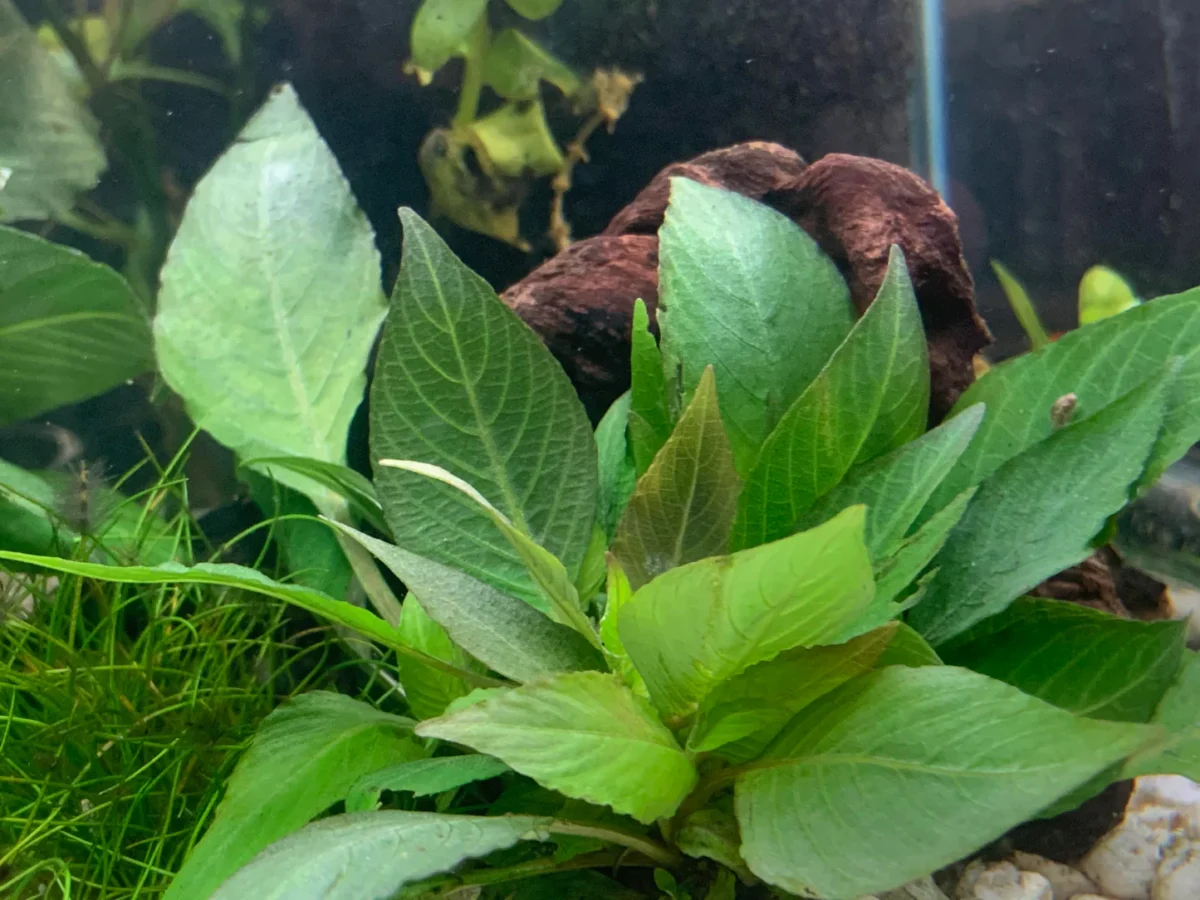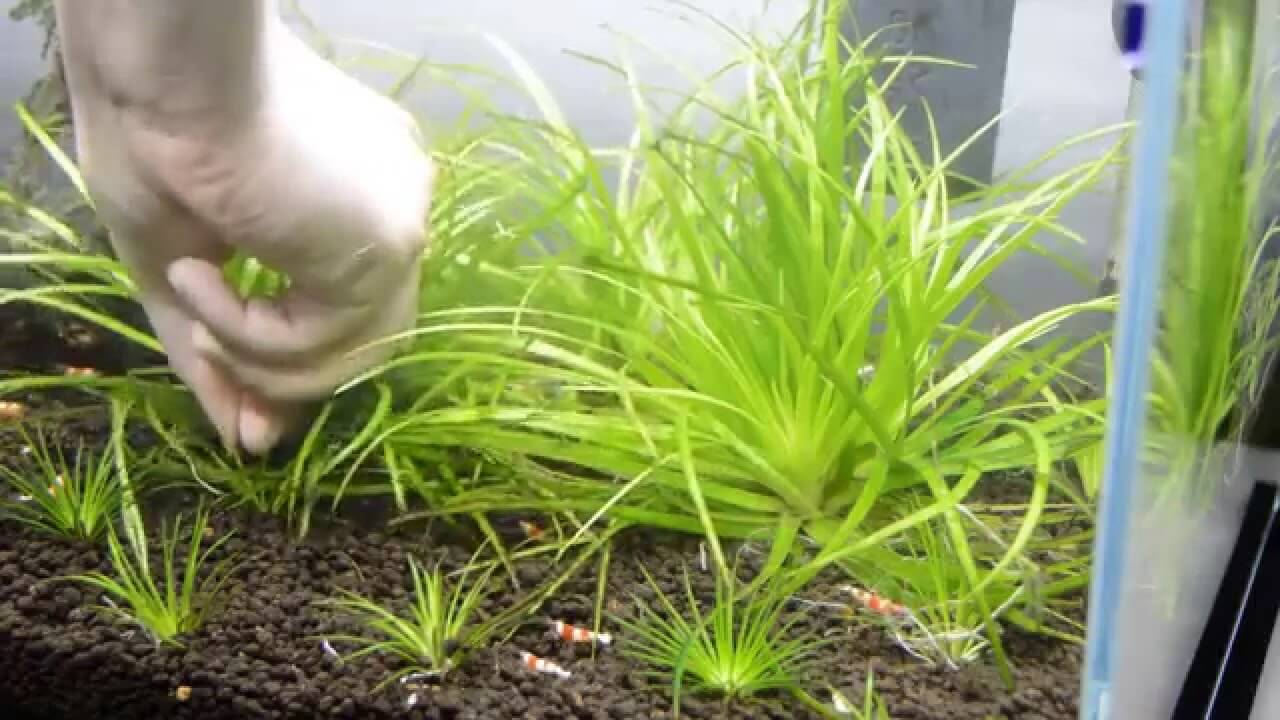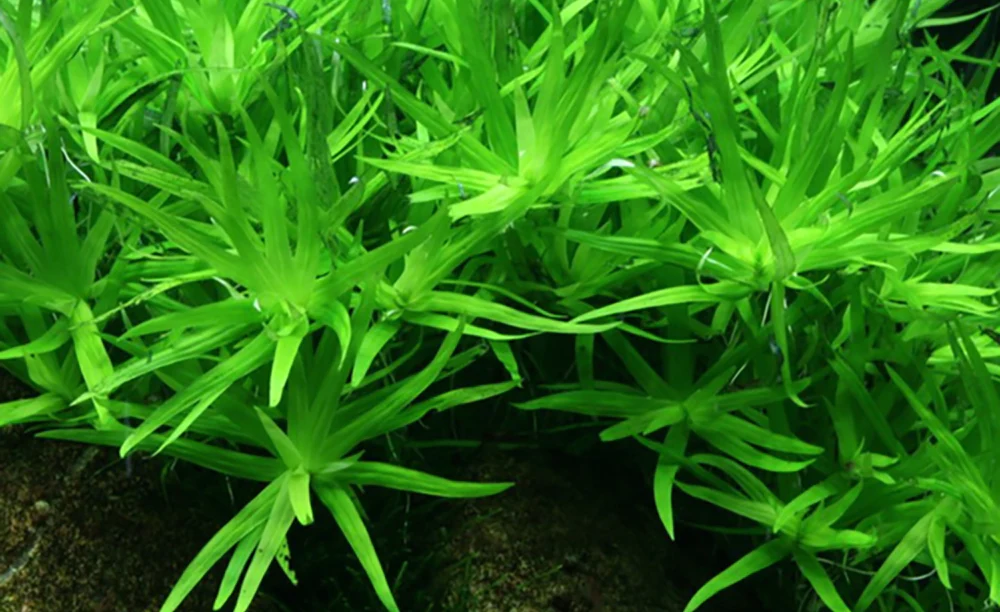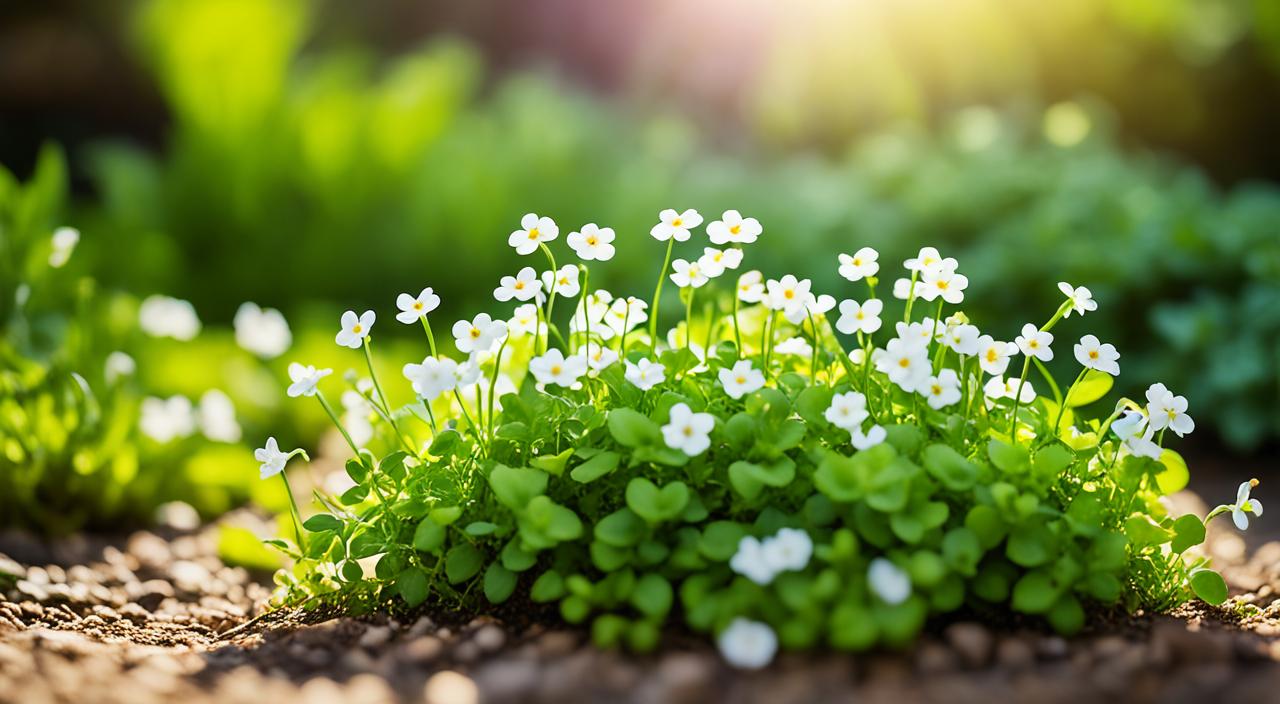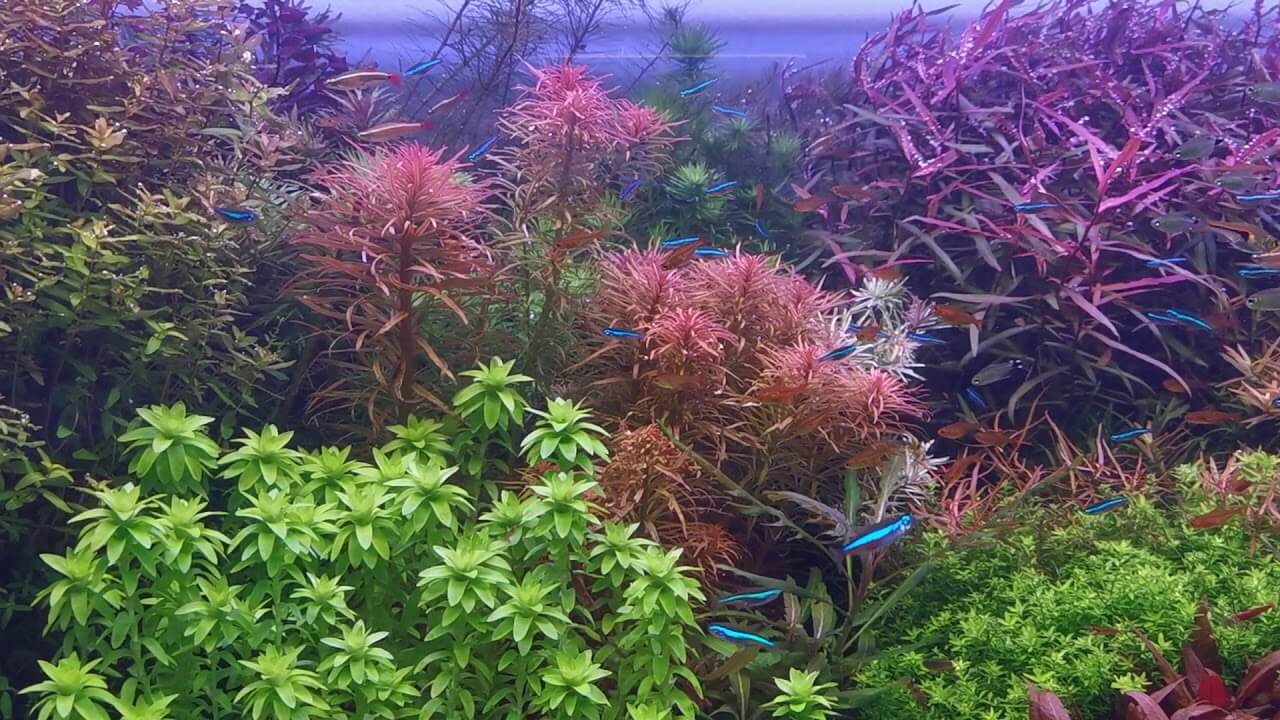Greetings, aquarium enthusiasts! Today, I am thrilled to introduce you to a fantastic aquarium plant that will add a touch of beauty and tranquillity to your tank – Hygrophila kompact. This remarkable plant is highly sought after for its compact growth habit and low maintenance requirements, making it a popular choice among aquarists of all experience levels. Let’s dive into the fascinating world of Hygrophila kompact and discover why it is an excellent addition to any aquarium.
Key Takeaways:
- Hygrophila kompact is a compact aquarium plant that requires minimal care.
- It adds a touch of lush greenery to smaller and larger tanks.
- Hygrophila kompact does not require high lighting or CO2 supplementation.
- This plant can shoot outside shots and create a visually appealing underwater landscape.
- With its vibrant green foliage, Hygrophila kompact is a versatile plant used in various aquascape layouts.
Brief Overview Of Hygrophila kompact
Hygrophila kompact is a popular choice for freshwater aquascaping due to its vibrant green foliage and ease of care. It is a compact variety of Hygrophila corymbosa that originated in Southeast Asia. This plant is characterized by its short internodes and the formation of lateral shoots, which gives it a full and compact appearance. It adapts well to aquarium conditions, with its leaves turning a paler green when grown underwater.
Hygrophila ‘Kompact’ Information Table:
| Atttributes | Descriptions |
|---|---|
| 1. Scientific Name: | Hygrophila corymbosa ‘Kompact’ |
| 2. Common Names: | Hygrophila ‘Kompact’, Compact Hygrophila |
| 3. Origin: | Cultivar, origin not specific |
| 4. Height: | 10-15 cm (4-6 inches) |
| 5. Growth Rate: | Moderate |
| 6. Colour: | Green to reddish-brown depending on light conditions |
| 7. Aquarium Placement: | Midground to foreground |
| 8. Water Type: | Freshwater |
| 9. pH: | 5.5-8 |
| 10. Care Level: | Easy to moderate |
| 11. Light Requirements: | Beneficial but not required, enhances growth and colouration |
| 12. CO2 Requirements: | Root tabs and liquid fertilizers are recommended |
| 13. Temperature: | 20-28°C (68-82°F) |
| 14. Flow Rate: | Moderate to high |
| 15. Propagation: | Cut stem and replant |
| 16. Feed Type: | Root tabs and liquid fertilizers recommended |
Expanded Light Requirements:
For Hygrophila ‘Kompact’, achieving lush growth and vibrant colouration often requires high lighting conditions. The ideal PAR (Photosynthetically Active Radiation) range for this plant is between 50 to 70, which is considered high light intensity in the aquarium hobby. This light level encourages compact growth and enhances the plant’s colouration from green to reddish-brown.
Regarding LUX, aiming for 30-50 lumens per litre can provide a good benchmark for sufficient lighting. However, it’s crucial to adjust based on the plant’s response and the overall balance of the aquarium ecosystem.
The Kelvin scale, which measures the colour temperature of light, also plays a role in plant growth and appearance. A range of 5000-7000 Kelvin is ideal for Hygrophila ‘Kompact’, simulating the bright, daylight conditions under which many aquatic plants thrive. Lights within this Kelvin range balance promoting photosynthesis and highlighting the natural colours of the plants and fish in the aquarium.
It can also exhibit reddish-brown hues under intense lighting. Hygrophila kompact is a versatile plant used in various aquascape layouts, adding visual interest and contrasting textures to your aquarium.
Origins And Habitat
Hygrophila kompact is a cultivated variety of the Southeast Asian aquatic plant Hygrophila corymbosa. It is believed to have been developed in a nursery from Hygrophila corymbosa and is also known as Hygrophila corymbosa ‘Mini’ and Nomaphila siamensis ‘Parvifolia’. This plant is native to Southeast Asian countries such as Thailand and Malaysia, where it thrives in aquatic habitats such as rivers, streams, and ponds. It is naturally adapted to grow both submerged and emergent, allowing for its widespread use in aquariums around the world.
Morphological Characteristics
Hygrophila kompact is characterized by its distinct morphological features. It has short internodes, which result in closely packed leaves along the stem. The leaves are initially a dark brown-green when grown in a nursery but turn paler green when submerged in an aquarium. Under intense lighting, new leaves can develop reddish-brown colouration, adding visual interest to the plant. The oldest leaves may die off in lower lighting conditions, but new shoots will emerge and continue the growth cycle. Hygrophila kompact has a compact growth form, making it an ideal choice for foreground planting in smaller tanks and adding a striking visual contrast to other plant species.
| Plant Appearance | Leaf Coloration | Compact Growth Form |
|---|---|---|
| Closely packed leaves along the stem | Initially, dark brown-green turns paler green when submerged | Short internodes result in compact growth |
| Under intense lighting, new leaves may develop reddish-brown coloration | New shoots emerge and continue the growth cycle | Well-suited for foreground planting in smaller tanks |
Placement And Lighting
Hygrophila kompact is a versatile plant that can be placed in various positions within an aquarium. Thanks to its compact growth habit and lush green foliage, it is commonly used as a foreground plant in larger tanks. In smaller tanks, it can be positioned in the midground to create a visually appealing focal point.
When it comes to lighting, Hygrophila kompact can thrive in a range of lighting conditions. It does well in moderate to strong lighting, promoting healthier and more robust growth. However, it can also survive in low-light conditions, making it suitable for low-tech and beginner-friendly setups.
For aquarium enthusiasts seeking to create a captivating underwater landscape, Hygrophila kompact is an excellent choice due to its adaptability and aesthetic appeal.
What Are Good Tank Mates?
When it comes to creating a harmonious and balanced aquarium, it’s essential to choose suitable tank mates for your Hygrophila kompact. By selecting compatible fish species, you can make a peaceful community tank that allows your plants to flourish and thrive. It’s essential to consider the temperament and behaviour of potential tank mates to ensure they won’t harm or disturb the growth of your Hygrophila compact.
Good Tank Mates
Several peaceful fish species make excellent companions for Hygrophila kompact. These fish tend to have non-aggressive behaviour, allowing plants to thrive without interference. Some suitable tank mates include:
- Tetras
- Rasboras
- Dwarf Gouramis
- Livebearers
These fish species are known for their peaceful temperament, making them ideal companions for your Hygrophila kompact. They won’t uproot the plants or nibble on the leaves, allowing your aquarium to maintain its visual appeal.
Fish Species To Avoid
While many compatible fish species exist for Hygrophila kompact, there are also fish species that may threaten your plants. It’s best to avoid fish species known to uproot plants or have a tendency to nibble on leaves. These fish can cause damage to your Hygrophila kompact and hinder its growth. Examples of fish species to avoid include:
- Cichlids
- Goldfish
- Some species of barbs
By avoiding these fish species, you can ensure the health and vitality of your Hygrophila kompact, allowing it to thrive in your community aquarium.
Feeding (Fertilization)
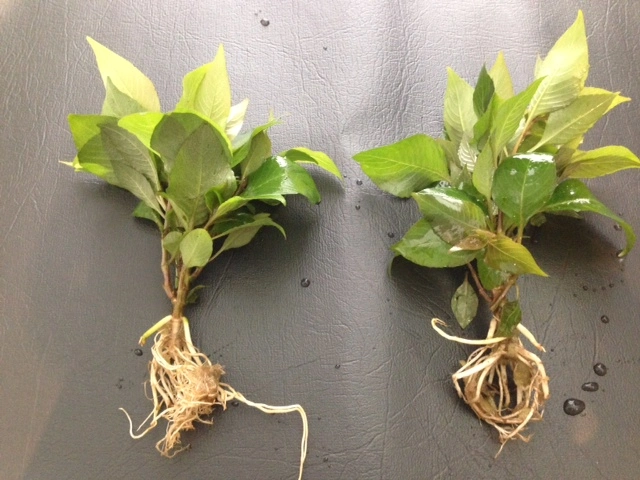
Hygrophila kompact, like other aquatic plants, requires proper feeding and fertilization to support its growth and overall health. It derives essential nutrients from the aquarium water, substrate, and fertilizers. The exact feeding requirements may vary depending on the specific conditions of your aquarium, such as lighting, CO2 supplementation, and water parameters.
Generally, it is recommended to provide a balanced liquid fertilizer formulated explicitly for aquarium plants. Follow the manufacturer’s instructions for dosage and frequency of application. Regular testing of water parameters can help determine if the plant is receiving adequate nutrients and adjust the feeding regimen accordingly.
How Much And How Often To Feed
When feeding Hygrophila kompact, it is important to strike a balance. Overfeeding can lead to nutrient imbalances and promote unwanted algae growth, while underfeeding can result in nutrient deficiencies and stunted growth.
The dosage and frequency of application will depend on the specific needs of your aquarium, including the plant’s growth rate and the nutrient content of your water. It is best to start with a smaller dosage and gradually increase it if necessary. Regular water parameter testing can help determine if the plant is receiving adequate nutrients or if adjustments need to be made to the feeding regimen.
Additionally, observe the plant’s growth and overall health. If the leaves start to turn yellow or show signs of stunted growth, it may indicate a nutrient deficiency. In this case, adjusting the feeding regimen or considering other fertilization methods, such as root tabs or substrates, may be necessary.
CO2 Injection
Hygrophila kompact can thrive without the need for heavy CO2 supplementation. It is adaptable to low-tech setups and can grow well with ambient carbon dioxide levels in the aquarium water. However, if you wish to enhance its growth and promote a more compact and vibrant appearance, adding CO2 can be beneficial.
Types
There are different methods of CO2 injection available, including liquid carbon supplements and pressurized CO2 systems. The choice of CO2 supplementation method will depend on the specific requirements of your aquarium setup and the available budget.
Care
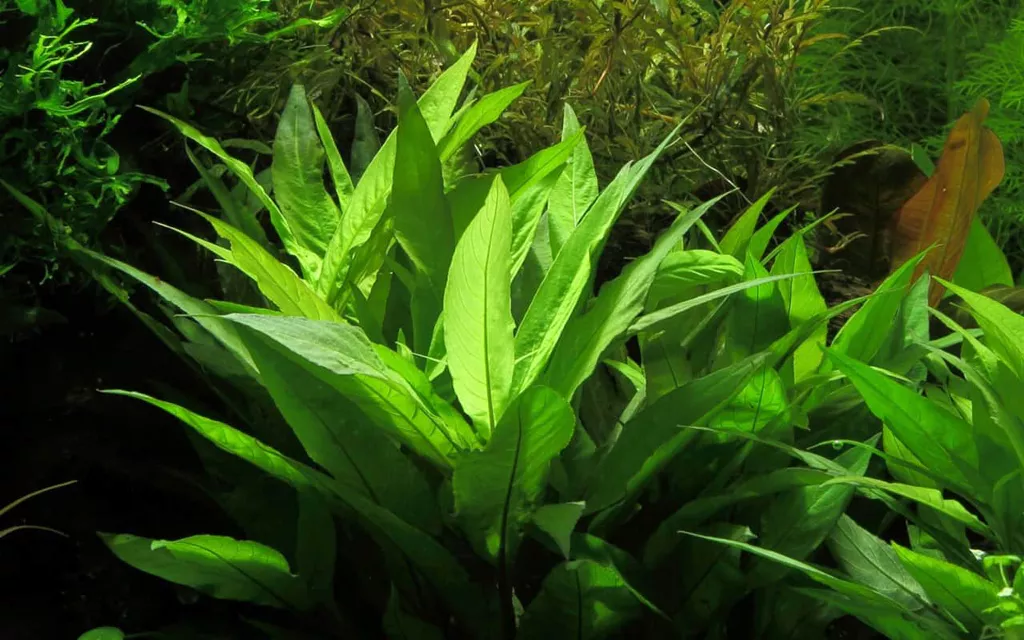
Planted Tank Parameters
The right environment for Hygrophila kompact starts with providing suitable planted tank parameters. Choose a nutrient-rich substrate such as nutrient-rich soil or gravel to anchor the plant’s roots and provide essential nutrients. This will promote healthy growth and ensure the plant receives the necessary elements to thrive.
Water Quality
Maintaining stable water quality is crucial for the overall health and growth of Hygrophila kompact. Monitoring and controlling water parameters such as temperature, pH, and hardness is essential. Aim for temperature ranges 74-80°F (23-27°C) and a pH of around 6.5-7.5. Additionally, maintaining proper water hardness levels will support the plant’s well-being.
Filtration
Adequate filtration is essential for keeping the aquarium water clean and free from excess organic waste and debris. Choose a reliable filtration system that can efficiently remove impurities and maintain optimal water conditions. This will prevent the accumulation of harmful substances and provide a healthy environment for Hygrophila kompact to grow.
Flow
Proper water flow is crucial for maintaining optimal nutrient distribution and preventing stagnant areas in the aquarium. Consider the placement of your filter outlet to facilitate adequate water circulation throughout the tank. Additional flow-enhancing equipment, such as powerheads or water pumps, can also improve water movement and promote optimal growth for the Hygrophila compact.
Aquarium Maintenance
Testing Water Conditions
Regular testing of water conditions is essential for maintaining the health and well-being of Hygrophila kompact. Using test kits, monitor parameters such as pH, ammonia, nitrite, and nitrate levels. These tests help identify any imbalances or issues affecting the plant’s health. By regularly testing the water conditions, adjustments can be made to ensure optimal growth and a thriving aquatic environment.
How To Set Up Your Aquarium Tank
When setting up your aquarium tank for Hygrophila kompact, there are several key considerations to remember. Providing suitable lighting is crucial, as it plays a significant role in supporting plant growth. Choose lighting fixtures with the appropriate intensity and spectrum for the plant’s needs.
In addition to lighting, consider the filtration system. A sound filtration system helps remove excess organic waste and debris from the aquarium, promoting clean water conditions. It is recommended to use a filter that suits the size of your tank and provides adequate water circulation.
The choice of substrate is also vital for Hygrophila kompact. Provide a nutrient-rich substrate such as aquarium soil or gravel to anchor the plant’s roots and supply essential nutrients. This will contribute to healthier growth and overall plant development.
Propagation Methods
Understanding the propagation methods for Hygrophila kompact is valuable for expanding your plant population. This plant can be propagated through stem cuttings or by allowing lateral shoots to grow and form new plants.
To propagate through stem cuttings, carefully cut a healthy stem just below a node and remove any leaves from the lower portion of the cutting. Plant the cutting in a suitable substrate, ensuring that the nodes are submerged. With proper care and favourable conditions, the cutting will develop roots and establish itself as a new plant.
Another propagation method is by allowing lateral shoots to grow. These side shoots develop naturally from the main plant and can be gently detached and replanted in the aquarium. Ensure each lateral shoot has sufficient roots before transplanting it to a new location.
Health And Disease
Monitoring the health of Hygrophila kompact is important to promptly identify any issues or diseases. It is essential to recognize the signs of good health and signs of poor health to ensure the well-being of your Hygrophila kompact plants. Common health issues may arise, and proper treatment methods and preventative measures should be taken to address them. Additionally, plant pests can threaten the health of Hygrophila kompact, requiring pest control measures for a thriving aquarium ecosystem.
Signs Of Good Health
Signs of good health in Hygrophila compact include vibrant leaf colouration, indicating proper chlorophyll production and nutrient absorption. Healthy plants will exhibit steady growth and no signs of discolouration or deformity.
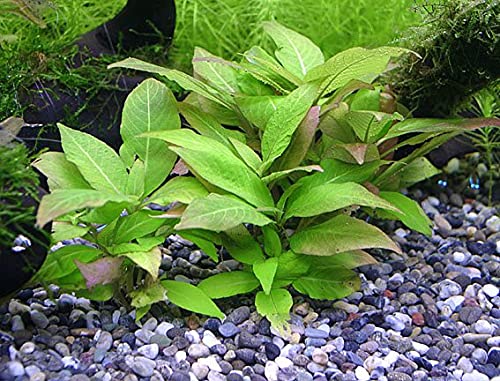
Signs Of Poor Health
Signs of poor health in Hygrophila kompact may include wilting, yellowing, or browning of leaves, indicating potential issues such as nutrient deficiencies or inadequate environmental conditions. Stunted growth and the presence of pests can also be indicators of poor health.
Common Health Issues And Treatment
Common health issues affecting Hygrophila kompact include nutrient deficiencies, algae growth, and bacterial or fungal infections. Proper fertilisation can address nutrient deficiencies, ensuring the plant receives adequate macro and micronutrients. Algae growth can be controlled by maintaining appropriate lighting levels, optimizing nutrient levels, and implementing algae-eating organisms. Bacterial or fungal infections may require specific medications or interventions to prevent the spread of disease and promote plant recovery.
Plant Pests
Plant pests, such as snails or algae, can affect the health of Hygrophila kompact. Snails can feed on the plant leaves and cause damage, while algae can compete for nutrients and inhibit proper growth. Implementing pest control measures, such as manual removal or introducing natural predators like snail-eating fish or shrimp, can help maintain a pest-free environment for the plant. Regular monitoring and early intervention are crucial to prevent pest infestations from impacting the overall health of Hygrophila kompact.
Summary
Hygrophila kompact is a versatile and visually appealing aquatic plant that adds beauty to any aquarium. Its compact growth form, vibrant green foliage, and low maintenance requirements make it an excellent choice for beginner and experienced aquarists. This plant can thrive in various lighting and CO2 conditions, making it suitable for many aquarium setups.
In addition to its aesthetic appeal, Hygrophila kompact is compatible with many fish species, making it a versatile choice for community aquariums. Providing the necessary care, including proper lighting, fertilization, and maintenance, ensures this plant’s optimal growth and beauty in your aquarium.
Whether used as a foreground focal point or as a complementary plant species, Hygrophila kompact can create a captivating underwater landscape. Its ability to thrive in different conditions and its versatility in aquascaping designs make it a popular choice among aquarists.
With its stunning appearance and minimal care requirements, Hygrophila kompact offers a range of benefits for aquarium enthusiasts. Bringing this plant into your aquarium can add a touch of natural beauty and create a visually pleasing and tranquil environment for you and your fish.
FAQ
What makes Hygrophila kompact a suitable choice for aquariums?
Hygrophila kompact is a compact aquarium plant that is easy to care for, making it suitable for both beginner and experienced aquarists. Its lush green foliage and compact growth habit add a touch of beauty to any aquarium.
Can Hygrophila kompact thrive in low light conditions?
Yes, Hygrophila kompact can survive in low light conditions, making it suitable for low-tech and beginner-friendly setups. However, it can also thrive in moderate to strong lighting, promoting healthier and more robust growth.
What are good tank mates for Hygrophila kompact?
Good tank mates for Hygrophila kompact include peaceful fish species like tetras, rasboras, dwarf gouramis, and livebearers. It is best to avoid fish species known for uprooting plants or nibbling on leaves, such as cichlids, goldfish, and some species of barbs.
How often should Hygrophila kompact be fed?
Hygrophila kompact derives essential nutrients from the aquarium water, substrate, and fertilizers. It is recommended to provide a balanced liquid fertilizer specifically formulated for aquarium plants, following the manufacturer’s instructions for dosage and frequency of application.
Do I need to supplement CO2 for Hygrophila kompact?
Hygrophila kompact can thrive without the need for heavy CO2 supplementation. It can grow well with just ambient levels of carbon dioxide in the aquarium water. However, if you wish to enhance its growth and promote a more compact and vibrant appearance, CO2 supplementation can be beneficial.
What are the optimal water parameters for Hygrophila kompact?
Hygrophila kompact adapts well to various water conditions. It thrives in stable water parameters, including temperature, pH, and hardness. Regular testing of water conditions using test kits can help ensure that the plant is receiving optimal conditions for growth.
How do I propagate Hygrophila kompact?
Hygrophila kompact can be propagated through stem cuttings or by allowing lateral shoots to grow and form new plants. By understanding the proper techniques for propagation, you can expand your plant population and ensure successful growth.
How do I maintain the health of Hygrophila kompact?
Monitoring the health of Hygrophila kompact is important. Signs of good health include vibrant leaf coloration, steady growth, and the absence of discoloration or deformities. Signs of poor health may include wilting, yellowing or browning of leaves, stunted growth, or the presence of pests. Proper treatment methods may involve adjusting water parameters, addressing nutrient deficiencies, and treating any identified diseases.

